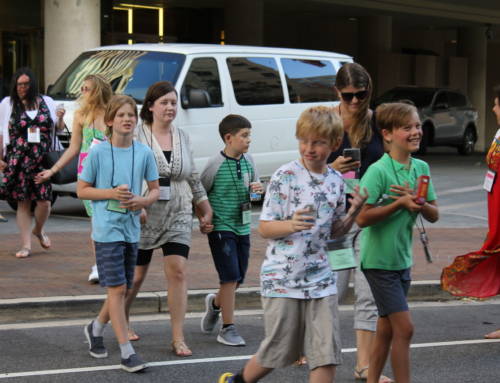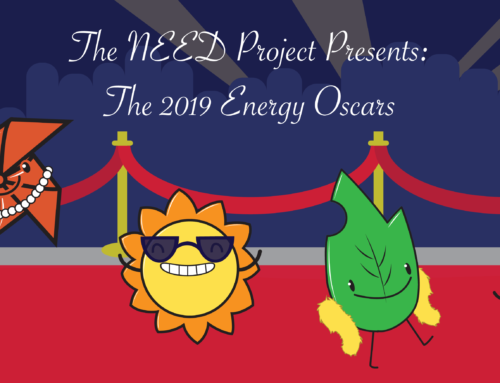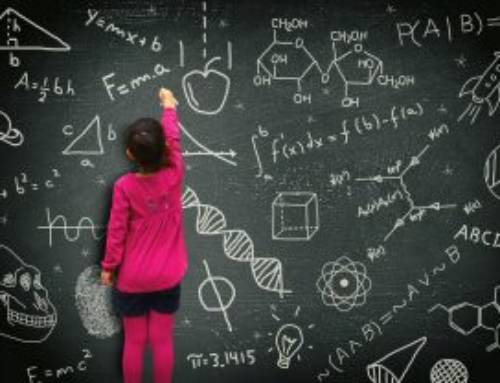If you are like many teachers, wondering how the Next Generation Science Standards are going to affect the instruction you deliver in your classroom, we are here to help. Released in their final form in April of 2013, this latest edition of standards is very different from previous versions.
First, the most obvious change is the presence of cross-cutting concepts and science and engineering practices alongside the content standards. Designed to reinforce basic skills, these concepts and practices are woven throughout all grade levels of the standards, increasing in complexity and expectation as the grade level increases.
Second, developing models, interpreting them, and designing experiments and devices to test ideas are emphasized, starting in third grade. Modeling abstract ideas is perhaps one of the most daunting tasks faced by science teachers as any model has its limitations.
We have been monitoring the development of NGSS very carefully at NEED. We are confident that we have curriculum materials that will help you meet the standards and continue to teach your students to be conscious, educated consumers of energy. We have prepared a general overview of the alignment of NEED materials to the NGSS.
Primary Grades (K-2)
These very young science students will need to make good observations, recognize patterns in their observations, and develop predictions based on their observations. Hands-on activities that are both informative and engaging will be a necessity! Primary Science of Energy and Energyworks can help your primary students understand what it means to make observations, describe them, and develop those important science skills. The patterns of weather, sunlight, and celestial objects can be demonstrated with many activities in The Sun and Its Energy and Wind is Energy. When geological events are introduced in second grade, Oil, Gas, and Their Energy will describe how changes occur slowly over time. And when these oldest primary children are ready to learn about water, Water and Energy will be ready to help them.
Elementary Grades (3-5)
Elementary students are ready to move from learning about science to actually doing science! They will need to be able to make measurements, identify a pattern, make predictions, and provide evidence from their observations. Developing cause and effect relationships and designing models or devices to demonstrate scientific concepts are introduced in fourth grade. Energyworks, Electroworks, and Wonders of Magnets will help your students get started with these important skills in third grade and carry them into fourth grade.
Speaking of fourth grade, welcome to the ‘Grade of Energy!’ These students will be asked to explain energy transformations, and that is precisely the focus of Science of Energy! When students begin to study various sources of energy, they can begin to develop ideas about climate change, which is also introduced in third grade and expanded in fourth grade. Learning about the climates of different world regions is an important concept illustrated in Mystery World Tour. This particular curriculum guide is currently undergoing a major revision and will soon be available to download.
Fifth graders are being asked to develop models about atoms and molecules, how matter moves through a biological system, and the interplay of matter among the geosphere, biosphere, hydrosphere, and atmosphere. The radiometer activity from station 3 in Science of Energy, Energyflows, Wonders of Water, and the carbon cycle activity from Understanding Climate Change all tackle these difficult concepts. These activities will help your students understand how models work and how models can also have limitations.
Intermediate Grades (6-8)
Beginning with middle school, science concepts are divided among physical, life, and Earth and Space sciences. Look to NEED curriculum guides for excellent activities that help students develop more complex models and understand concepts like: thermal energy and its transfer, the effect of humanity on the earth and its systems, and the interplay of multiple geological and atmospheric processes. Science of Energy will help lay the foundation for most of the physical science standards, and Electroworks, Wonders of Magnets, and Thermodynamics all have activities that will finish the physical science section.
Energy Flows, Understanding Climate Change, and Science of Energy will help your students understand photosynthesis, carbon, nitrogen, and water cycles, and how energy flows in and out of the biosphere with respect to the life science standards.
An extensive amount of Earth and Space science standards directly relate to activities found in NEED curriculum guides. Exploring Oil and Gas, Understanding Climate Change, H2Educate, Energy from the Wind, Energy from the Sun, and Energy of Moving Water contain several activities each that will help your students understand the complex systems on Earth and their interactions. When it comes to understanding the impact of population growth and human activity, these titles coupled with Museum of Solid Waste will give your students a broader, clearer picture of how we are affecting geological systems.
The solar house design activity in Energy from the Sun and the wind blade design activity from Energy from the Wind will provide your students an opportunity to engage in an engineering and design challenge as dictated in the middle school engineering section of the standards.
Secondary Grades (9-12)
Continuing the separation of physical, life, and Earth and Space sciences, science concepts become more detailed and require more extensive application of basic skills. This is also the grade level at which NEED curriculum guides provide the most support within the framework of the NGSS. The following list of curriculum guides contains after each title a summary of the standards it supports. (P) indicates a Physical Science standard, (L) indicates a Life Science standard, (ES) indicates an Earth and Epace Science standard, and (ED) indicates an Engineering Design standard.
Energy on Public Lands – evaluate solution to a complex real-world problem involving trade-offs (ED)
Exploring Climate Change – develop model of photosynthesis and respiration as related to carbon cycle (L); evaluating that ecosystems remain consistent but can be affected by changing conditions (L); find a solution for reducing the impacts of human activities on the environment (Wedge Challenge) (L); simulation for testing solution to mitigate adverse human impacts on biodiversity (L); develop quantitative model of carbon cycle (ES); analyze data to show one change to Earth’s surface can cause changes to other Earth systems (ES); show how energy flows within Earth’s systems change its climate (ES); analyze data to forecast rate of global climate change (ES); explain how resources have influenced human activity (ES); evaluate technological solution to reduce human activity impact (ES); illustrate relationships among Earth systems (ES); Analyze major global challenge (Wedge Challenge) (ED)
Exploring Hydroelectricity – design and refining of a device that transforms energy (P); model of two objects interacting through electric or magnetic fields (science of electricity model) (P); investigating the properties of water (ES); evaluating solution to a complex real-world problem involving trade-offs (ED)
Exploring Nuclear Energy – nuclear energy and changes in the nucleus (P); life span of the sun and nuclear fusion (ES); evaluating solution to a complex real-world problem involving trade-offs (ED)
Exploring Oil and Gas – electrical force strength between particles (P); molecular-level structure as it relates to designed materials (P); plate tectonics (ES);
Exploring Photovoltaics – design and refining of a device that transforms energy (P); wave/particle duality of electromagnetic radiation (P); effects of absorbing electromagnetic radiation (P); sun’s release of energy (ES)
Exploring Wind Energy – design and refining of a device that transforms energy (P); evaluating solution to a complex real-world problem involving trade-offs (ED)
H2Educate – element properties and the periodic table (P); investigating the properties of water (ES)
Learning & Conserving – which can be used along with Saving Energy At Home and At School, design solution to a complex real-world problem by breaking it down into smaller problems (ED)
Mission Possible – explain how resources have influenced human activity (ES); evaluate design solutions for utilizing resources (ES); evaluate solution to a complex real-world problem involving trade-offs (ED)
Secondary Science of Energy – release and absorption of energy in chemical reactions (P); electromagnetic interactions (P); energy transformations, including photosynthesis (P) and (L); description of how devices use waves to capture energy (P)
Thermodynamics – transfer of thermal energy (P)




